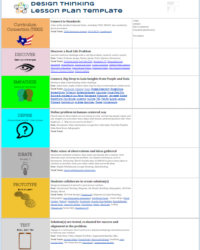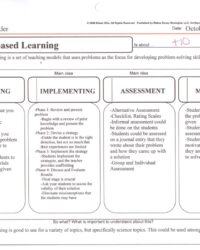Imagine a classroom where students aren’t just passively receiving information but actively piecing together concepts, making connections, and truly owning their learning journey. This isn’t just a dream; it’s the core promise of guided discovery. This powerful pedagogical approach empowers learners to uncover knowledge themselves, with the teacher acting as a skilled facilitator rather than a mere dispenser of facts. It’s about sparking curiosity and fostering a deep, lasting understanding.
For educators seeking to cultivate critical thinking and problem-solving skills, incorporating guided discovery into lessons can be transformative. However, shifting from traditional teaching methods requires thoughtful preparation. That’s where a well-structured framework comes in handy, ensuring that every step of the discovery process is intentional and effective. Let’s explore how you can design lessons that truly engage and enlighten.
The Power and Practice of Guided Discovery in the Classroom
Guided discovery stands apart from rote memorization and direct instruction by placing the student at the center of the learning process. Instead of simply presenting solutions or facts, teachers design experiences that lead students to discover these truths themselves. This method isn’t about letting students wander aimlessly; it’s about carefully scaffolding their exploration, providing just enough support to ensure success without giving away the answers. The benefits are profound: enhanced retention, increased motivation, and the development of higher-order thinking skills that are crucial in any field.
Consider a science lesson where students conduct an experiment to deduce a principle, rather than being told the principle beforehand. Or a history class where students analyze primary sources to infer the motivations behind a historical event. These are prime examples of guided discovery in action. The teacher’s role is critical here – they must anticipate potential misconceptions, prepare guiding questions, and create a safe environment where exploration and even productive mistakes are encouraged. It requires a delicate balance of giving freedom and providing structure.
Key Principles for Effective Implementation
To truly harness the potential of guided discovery, several core principles should guide your lesson planning:
- Posing Engaging Questions: Start with a question or problem that sparks curiosity and requires investigation.
- Providing Accessible Resources: Ensure students have the necessary materials, data, or information to explore the topic.
- Scaffolding Support: Offer hints, prompts, or smaller steps as needed, but avoid giving direct answers.
- Facilitating Discussion: Encourage students to share their findings, explain their reasoning, and debate different perspectives.
- Allowing for Productive Struggle: Recognize that the learning happens during the process of grappling with the problem, not just in arriving at the answer.
- Summarizing and Consolidating: Help students articulate what they’ve discovered and connect it to broader concepts.
While the rewards of guided discovery are immense, implementing it effectively can present challenges. It demands more preparation time upfront from the teacher to design the discovery pathway. Classroom management can also be a concern, as students are more active and potentially less uniformly focused. Furthermore, assessing understanding might require more nuanced methods than traditional tests, focusing on process and reasoning as much as the final answer. Overcoming these hurdles involves clear expectations, consistent practice, and a willingness to adapt your approach based on student responses.
Developing Your Own Guided Discovery Lesson Plan Template
Creating a structured framework for your guided discovery lessons can significantly streamline your planning process and ensure consistency in your approach. A robust guided discovery lesson plan template helps you systematically think through each stage of the discovery process, from setting the stage to consolidating new knowledge. It’s a tool that empowers you to design engaging, student-centered experiences repeatedly.
Think of this template as your blueprint. It doesn’t restrict creativity; rather, it provides a solid foundation upon which you can build innovative lessons. By outlining the essential components, you ensure that no crucial step is overlooked, guaranteeing a coherent and effective learning journey for your students. This systematic approach also makes it easier to reflect on what worked well and what could be improved for future iterations of your lessons.
Here are the essential sections to consider when developing your own guided discovery lesson plan template:
- Lesson Title and Topic: A clear heading and subject area.
- Learning Objectives: What students should be able to know or do by the end of the lesson, stated in observable terms.
- Materials and Resources: A list of everything needed for the discovery activity (e.g., worksheets, manipulatives, digital tools, primary sources).
- Introduction Hook/Problem: How you will engage students and present the guiding question or problem they will solve.
- Guided Exploration Procedure: Step-by-step instructions for the student-led discovery process, including guiding questions, prompts, and activities.
- Teacher’s Role and Anticipated Student Actions: What the teacher will be doing (facilitating, observing, questioning) and how students are expected to interact.
- Consolidation and Discussion: How students will share their findings, discuss implications, and connect their discoveries to broader concepts.
- Assessment: How you will evaluate student understanding of the discovered concepts, which might include observations, discussions, or short tasks.
- Differentiation and Support: Strategies for supporting diverse learners and providing appropriate challenges.
- Reflection: A space for post-lesson notes on what went well and areas for improvement.
Embracing the guided discovery approach can truly revolutionize your classroom, fostering an environment where students are active participants in their own learning. By providing them with the tools and the freedom to explore, you cultivate deeper understanding, critical thinking, and a lifelong love of learning. The deliberate use of a structured planning tool ensures that these rich experiences are consistently delivered.
The time invested in perfecting your planning process will pay dividends in student engagement and academic growth. A well-crafted plan is not just about organizing information; it’s about setting the stage for transformative educational moments, where every student has the chance to be a true discoverer of knowledge.


